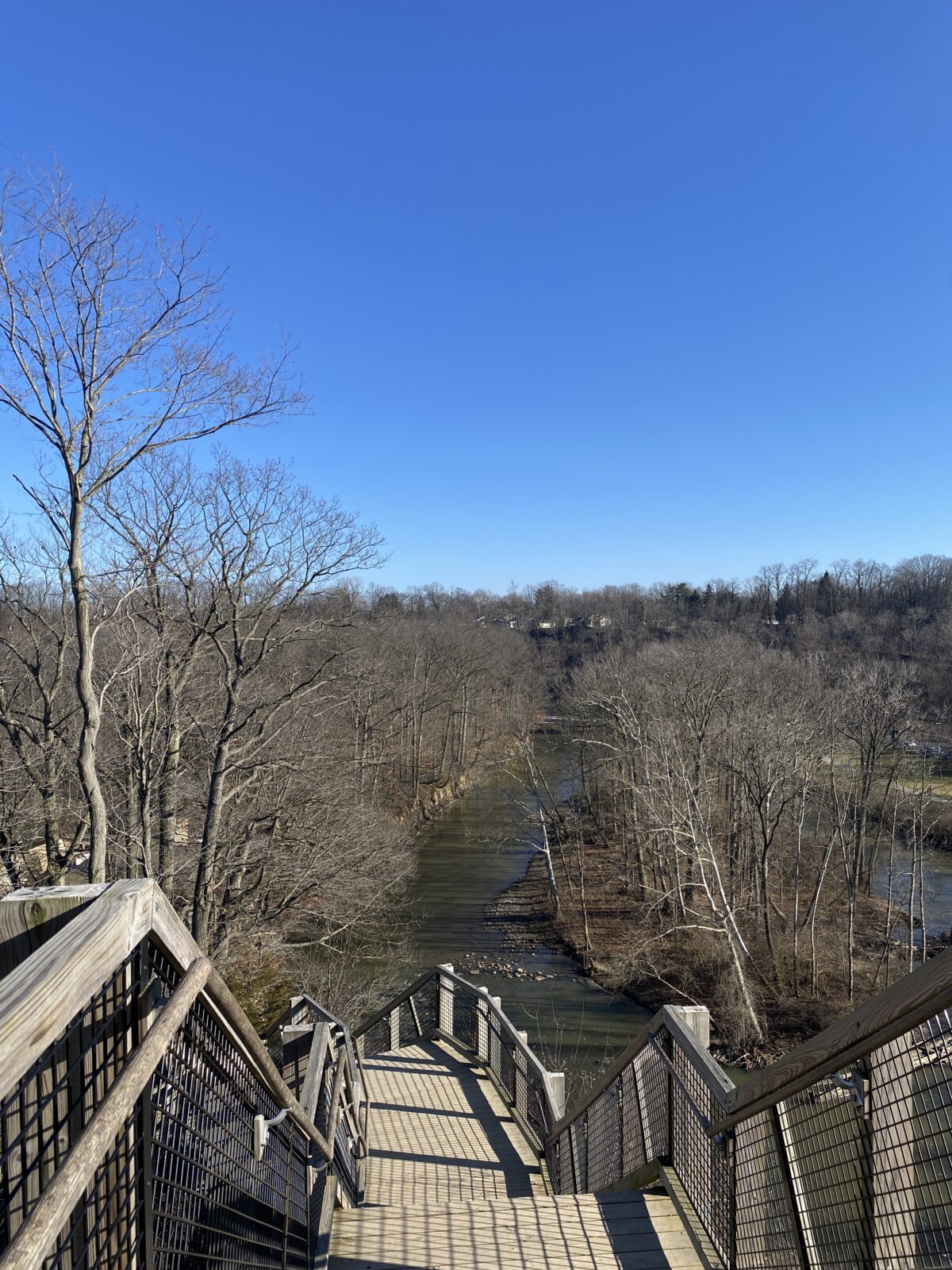Right here, 155 steps from the bottom of Fort Hill, the Rocky River rises proudly to meet the sun.
Over 2,000 years ago, early Woodland Indians built three walls with trenches between them at the top of this 90 foot shale cliff. They’re much smaller today than when they were first built, but erosion hasn’t erased them completely. Guarded by an informational plaque and wooden fencing on all sides, the humble ripples in the surface of the cliff remain, ever reaching to the sun.
Standing on this spot, I could feel why the Woodland people had turned this earth, sending its echoes into the blue sky above. The sheer face of the cliff not hugged by stairs drops off into the river and seems to be carried forward by the current. In this way, the land moves in both directions; the energy of the geography itself seems to have birthed the mounds without human intervention.
As winter gives way to spring, the Rocky River’s floes will melt and the skeletal canopy will grow full again. The earthworks’ surface will push forth sprouts for a thousand-thousandth time to greet those that climb the stairs, anxious to see the view.
Have a bright spot to share? Send it to Managing Editor Julia Lerner (lernerj@denison.edu). Tell us about the moment that made you smile in under 200 words, and try to include a photograph

